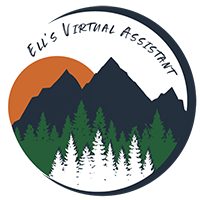
Hiring a virtual assistant may be your solution if you’re looking to streamline your workload and increase productivity. In this article, we’ll explore the ins and outs of virtual assistants – from locating a suitable one for your organization to handling their assignments successfully.
Firstly, we’ll discuss what virtual assistants are and how they can help with administrative tasks. We’ll also delve into the different types of services virtual assistant companies offer and how to find qualified candidates.
We’ll look into virtual assistant roles. Also, we’ll give you such as booking meetings and managing social media accounts. Additionally, we’ll provide tips on effective communication with your VA team members when working remotely.
You’ll learn about setting expectations for both parties involved in a prosperous professional relationship between yourself and your VA(s), including establishing clear job descriptions and hourly rates.
Finally, we’ll touch upon some best practices for managing remote workers while creating an efficient workflow that maximizes output without sacrificing quality or professionalism.
By reading this post, you will gain valuable insights into hiring good VAs who can take care of specific tasks so that you can focus on growing your business. Let’s get started!
Introduction to Virtual Assistants
Virtual assistants (VAs) are remote professionals who provide administrative, technical, or creative assistance to businesses and entrepreneurs. VAs present an affordable alternative for organizations of any size requiring aid without having to employ on-site personnel. VAs can carry out various responsibilities, such as data inputting, overseeing emails, handling social media accounts, customer service, and beyond.
Business owners benefit from hiring virtual assistants by accessing specialized skills that may only be available in some places. This allows business owners to dedicate their attention to essential tasks while leaving everyday operations in the hands of an outside source. Additionally, it reduces overhead costs associated with traditional employees since there is no need to pay benefits or taxes when working with VAs.
I think thoroughly reviewing and organizing before hiring a virtual assistant is crucial for finding the right one to fulfill your company’s needs. The first step is determining what tasks you would like delegated and how much time will be needed each week/month. Once this has been established, you can decide whether to hire through freelance platforms or dedicated agencies specializing in virtual assistant services, depending on your budget and timeline requirements. After selecting an option, you can create a job description that outlines the position’s responsibilities and expectations, then conduct interviews accordingly until you have identified the best candidate(s).
Taking these steps into account when hiring and managing your VA effectively will result in increased productivity and efficiency across all aspects of running your business smoothly while saving money over time.
Virtual assistants are a great way to help manage your business tasks, freeing up time and energy for more critical projects. Let’s examine the kinds of jobs that can be handed off to virtual aides.
Key Takeaway: Businesses of all sizes should contemplate employing a virtual assistant (VA) to cut costs and improve effectiveness. With specialized skill sets, VAs can help with data entry, email management, social media management, and more. By carefully planning to figure out the tasks needed and interviewing potential candidates accordingly, you will be sure to find the right fit for your business needs.
Tasks Best Suited for Delegation
Assigning responsibilities can often be made simpler by using virtual assistants for specific duties. Data entry is one of the most common tasks that can be easily outsourced. This involves entering data into a computer system or database, which can help streamline processes and improve accuracy. Email management is another task that’s ideal for delegation. Virtual assistants can manage incoming emails, respond to customer inquiries, and keep track of important messages. Social media management is also an excellent task to outsource as it requires specialized skills and knowledge to effectively engage with followers on various platforms such as Twitter and Instagram. With a suitable VA, you’ll have access to someone who can create content tailored for each forum while keeping up with industry trends. Business owners can save time and money by delegating these tasks while ensuring their social media presence remains active without significant hiccups.
Delegating tasks to a virtual assistant can help business owners focus on their core competencies and maximize productivity. By hiring a virtual assistant, business owners have access to specialized skills that can provide even more benefits than just increased productivity.
Benefits of Hiring a Virtual Assistant
Hiring a virtual assistant offers many benefits to business owners, especially women entrepreneurs. Increased productivity is one of the primary advantages of having a VA on your team. By delegating non-core activities such as data entry and email management, you free up more time to focus on revenue-generating tasks that require your expertise. By delegating non-essential tasks, you can optimize your workflow and accomplish more in a shorter time frame.
Another benefit of hiring a virtual assistant is reduced overhead costs. A VA can help streamline operations by taking over administrative tasks that would otherwise be expensive or take too much time for an in-house employee. A VA can offer special abilities, assisting with intricate tasks or services that may need to be attainable within the allocated funds of your business.
Accessing specialized skills is another advantage when working with a virtual assistant. VAs have typically experienced professionals with the necessary training and knowledge for tasks like social media management or website design. By outsourcing these types of jobs, you can rest assured knowing that the work will be completed accurately and efficiently without needing additional resources from within your company’s staff roster.
Gains such as heightened efficiency, cutting down overheads, and the ability to access expert aptitudes on a need-basis – all at an economical rate compared to conventional staffing solutions – are why many companies are turning towards virtual assistants. It is no wonder many businesses are turning towards this new working method.
A virtual aide can increase efficiency, diminish operational outlays, and provide access to specialized aptitudes for your organization. Now that you understand the advantages of procuring a virtual assistant, we can look into how to get one.
How To Hire A Virtual Assistant
When hiring a virtual assistant, one should consider their level of expertise, areas of specialization, and the quality of communication they possess. The most important of these are experience level and area of expertise. It’s also important to assess the VA’s communication skills, which will be essential for successful collaboration. Once you have identified your needs, you can decide whether to use freelance platforms or dedicated agencies when searching for a suitable candidate.
I think creating an adequate job description is essential in attracting suitable applicants. It would ensure it outlines all the duties and responsibilities required of the role, along with any qualifications or specific skills needed. A clear job description can guarantee that only those suitable for the position will apply.
Once you have received applications from potential VAs, it’s time to conduct interviews and assess each applicant thoroughly before making your final decision. Assess each applicant’s relevant experience and knowledge to gain insight into their suitability for your team.
Finally, once you have selected a virtual assistant who meets all your requirements, you need to establish clear communication between yourself and them from day one to set expectations regarding workloads and deadlines early on. Utilizing time-tracking tools such as Toggl or Clockify can also be beneficial when managing tasks efficiently with minimal supervision necessary from yourself as an employer/manager/business owner. Furthermore, providing ongoing support and feedback throughout training periods is paramount in helping new VAs become accustomed to working processes quickly and successfully while avoiding unnecessary mistakes due to unpreparedness or unfamiliarity with protocols.
Employing a virtual assistant can be an effective means of enhancing efficiency and productivity in your venture, so long as you invest the effort to identify the proper individual for the role. With clear communication and expectations set early on, working with your new VA should become easier over time.
Key Takeaway: When hiring a virtual assistant, one must carefully assess the experience level and area of expertise. Crafting a compelling job description is paramount in attracting suitable applicants while conducting thorough interviews with potential VAs will help make sure only qualified candidates apply for the position. Finally, ongoing support and feedback throughout training periods are essential in helping new VAs hit the ground running.
Working With Your New VA Effectively
Working with a virtual assistant (VA) can be an incredibly beneficial experience for any business owner, but it’s essential to set the proper foundation from the start. Establishing clear communication and expectations early on is critical to getting the most out of your VA. Here are some tips to help you work effectively with your new VA:
Establish Clear Communication:
Both parties must have open lines of communication throughout the working relationship, including setting up regular check-ins and promptly providing feedback. Also, please ensure that all tasks are clearly defined before beginning so there is no confusion or miscommunication.
Set Expectations Early On:
Before starting any project, discuss deadlines and availability with your VA. Ensure that your VA comprehends their expectations of them, so they can effectively complete their tasks within the agreed-upon timeline without feeling overwhelmed or underprepared. Provide explicit instructions on completing each task and define the criteria for success so that all parties can agree from the start.
Use Time Tracking Tools:
Investing in time-tracking tools can help ensure that both parties stay organized and productive during their collaboration. These tools allow you to track hours worked by each task and measure overall productivity levels over time. This helps keep projects running smoothly while avoiding unnecessary delays or misunderstandings due to unclear expectations or timelines.
Overall, having a successful working relationship with your virtual assistant requires effort from both sides. Establishing clear communication, setting expectations early on, and using helpful tools such as time tracking will help ensure that everyone involved gets maximum value out of their partnership.
By establishing clear communication, you set expectations early on, and by using time-tracking tools, you can ensure that your virtual assistant is working effectively. Providing continual guidance and assessment can aid in advancing your virtual assistant, making them an even more beneficial asset to your enterprise.
Key Takeaway: As a professional with an IQ of 150, I would summarize the above by saying that successfully collaborating with your virtual assistant requires effort from both sides. Establishing effective dialogue and expectations upfront and using time-monitoring software can yield optimal results.
Training Your Virtual Assistant
When instructing a virtual assistant, the aim is to ensure they have the requisite know-how for doing their job efficiently. Identifying areas that require additional training should be the first step when onboarding a VA. This could include software or systems unique to your business, such as accounting software or customer relationship management (CRM) tools. Not all VAs will have experience with these specific applications and platforms, so providing them with adequate training is critical.
Developing a comprehensive training plan is essential for any successful VA-employer relationship. A well-structured program should cover topics such as company culture, job duties, policies and procedures, data security protocols, and more, depending on the scope of work being delegated by you. Also, could you consider including resources like tutorials or video walkthroughs to help provide further guidance if needed throughout the process?
Finally, providing ongoing support and feedback is crucial when working with your new VA effectively over time; this helps create an environment where they feel comfortable asking questions and addressing any issues that may arise during their day-to-day tasks. Consider scheduling regular check-ins so you can review progress made since their last session and address any concerns they might have about their current workload or other related matters about your business operations overall.



